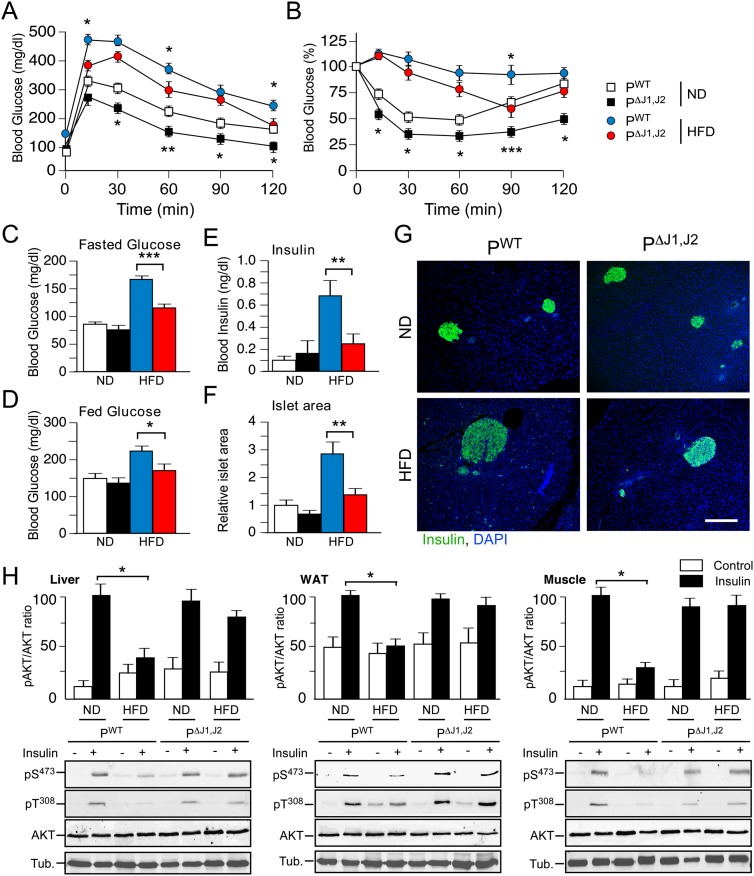Figure 3.
JNK-mediated obesity causes insulin resistance. (A,B) The effect of consuming a HFD (16 wk) on glucose tolerance (A) and insulin tolerance (B) was examined (mean ± SEM; n = 8∼12). Significant differences between PWT and PΔJ1,J2 mice were detected. (*) P < 0.05; (**) P < 0.01; (***) P < 0.001. (C,D) The blood glucose concentration in mice fasted overnight (C) or fed ad libitum (D) was measured (mean ± SEM; n = 20). (*) P < 0.05; (**) P < 0.01. (E) The blood insulin concentration in mice fasted overnight was measured (mean ± SEM; n = 20). (**) P < 0.01. (F,G) Sections of the pancreas of PWT and PΔJ1,J2 mice fed an ND or a HFD (16 wk) were stained with an antibody to insulin. DNA was stained with DAPI (blue). Bar, 150 μm. The relative area of islets in pancreatic sections is presented as the mean ± SEM (n = 25∼35). (**) P < 0.01. (H) Mice were starved overnight and treated by intraperitoneal injection with saline (control) or insulin (1.5 U/kg). (Top panels) Tissue extracts prepared at 15 min post-injection were examined by multiplexed ELISA for pAKT and AKT (mean ± SEM; n = 5∼6). (*) P < 0.05. Representative extracts were also examined by immunoblot analysis using antibodies to αTubulin (Tub.), AKT, and phospho-AKT (pSer473 and pThr308).

